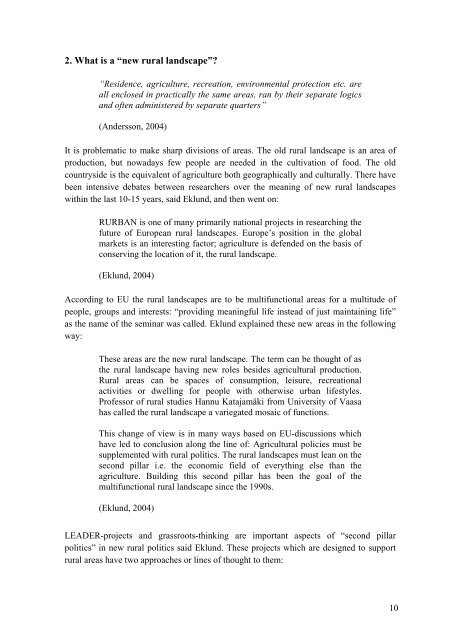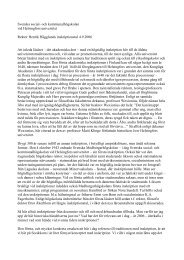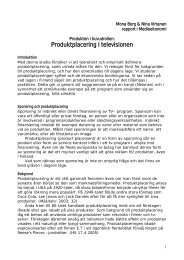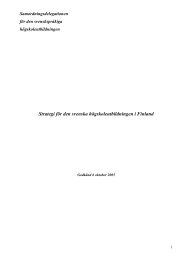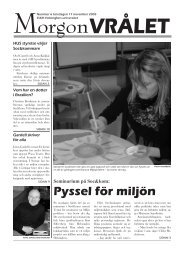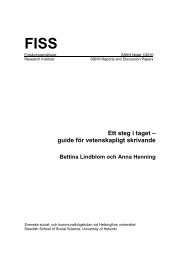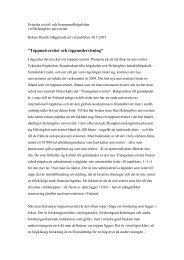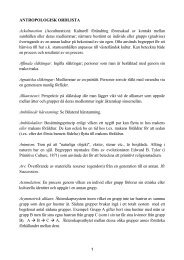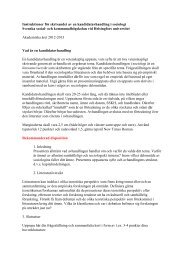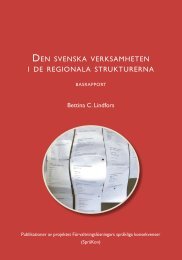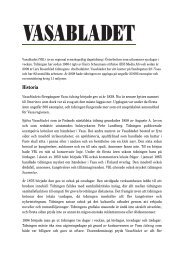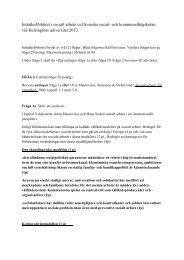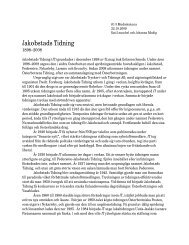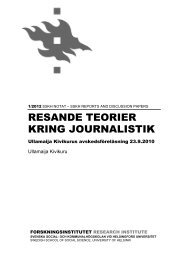FISS - Svenska social - Helsinki.fi
FISS - Svenska social - Helsinki.fi
FISS - Svenska social - Helsinki.fi
You also want an ePaper? Increase the reach of your titles
YUMPU automatically turns print PDFs into web optimized ePapers that Google loves.
2. What is a “new rural landscape”?<br />
“Residence, agriculture, recreation, environmental protection etc. are<br />
all enclosed in practically the same areas, ran by their separate logics<br />
and often administered by separate quarters”<br />
(Andersson, 2004)<br />
It is problematic to make sharp divisions of areas. The old rural landscape is an area of<br />
production, but nowadays few people are needed in the cultivation of food. The old<br />
countryside is the equivalent of agriculture both geographically and culturally. There have<br />
been intensive debates between researchers over the meaning of new rural landscapes<br />
within the last 10-15 years, said Eklund, and then went on:<br />
RURBAN is one of many primarily national projects in researching the<br />
future of European rural landscapes. Europe’s position in the global<br />
markets is an interesting factor; agriculture is defended on the basis of<br />
conserving the location of it, the rural landscape.<br />
(Eklund, 2004)<br />
According to EU the rural landscapes are to be multifunctional areas for a multitude of<br />
people, groups and interests: “providing meaningful life instead of just maintaining life”<br />
as the name of the seminar was called. Eklund explained these new areas in the following<br />
way:<br />
These areas are the new rural landscape. The term can be thought of as<br />
the rural landscape having new roles besides agricultural production.<br />
Rural areas can be spaces of consumption, leisure, recreational<br />
activities or dwelling for people with otherwise urban lifestyles.<br />
Professor of rural studies Hannu Katajamäki from University of Vaasa<br />
has called the rural landscape a variegated mosaic of functions.<br />
This change of view is in many ways based on EU-discussions which<br />
have led to conclusion along the line of: Agricultural policies must be<br />
supplemented with rural politics. The rural landscapes must lean on the<br />
second pillar i.e. the economic <strong>fi</strong>eld of everything else than the<br />
agriculture. Building this second pillar has been the goal of the<br />
multifunctional rural landscape since the 1990s.<br />
(Eklund, 2004)<br />
LEADER-projects and grassroots-thinking are important aspects of “second pillar<br />
politics” in new rural politics said Eklund. These projects which are designed to support<br />
rural areas have two approaches or lines of thought to them:<br />
10


